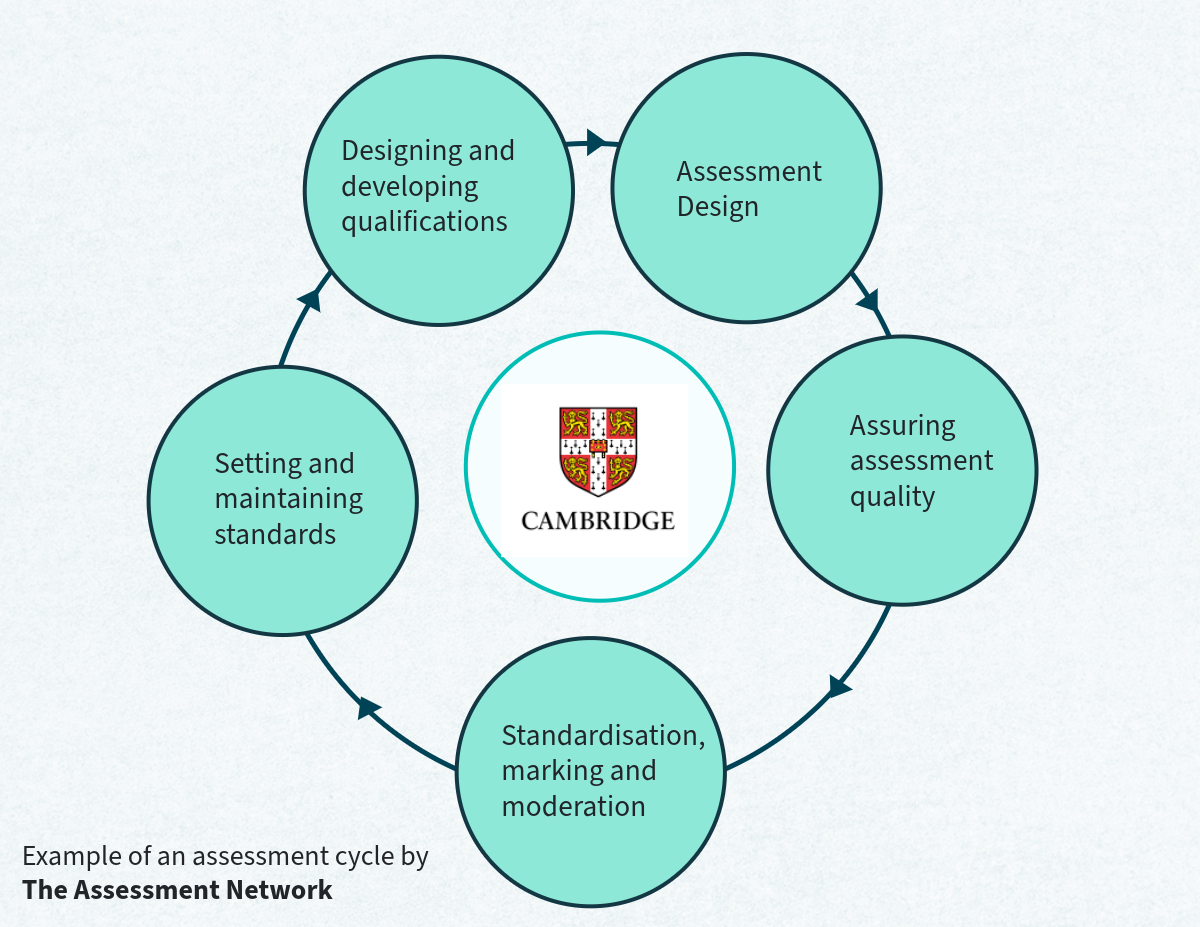At Cambridge, we offer a broad range of assessments, from the IGCSES and A Levels provided by OCR and Cambridge International, to the Linguaskill and IELT assessments provided by Cambridge English. These take place in a range of formats, such as practical assessments, multiple-choice papers, and digital assessments based online. Yet despite the diversity in these assessments, all of them are underpinned by a similar underlying framework: the assessment cycle. The assessment cycle acknowledges the fact that although assessments are often viewed as singular events (such as a speaking exam), or objects (like an exam paper), they are in fact merely one part of a far larger process, from qualification design to the awarding of grades and certification.
At The Assessment Network, we offer training across all these stages in a variety of formats. These include our Assessment Practitioner workshops, covering skills such as multiple-choice writing and item response theory, as well as A102: Introducing Assessment Practice, which guides participants through the assessment cycle from start to finish.
To support those interested in this topic, James Beadle, Senior Professional Development Manager at The Assessment Network, has provided an overview of the assessment cycle along with a brief description of the key considerations involved.

Designing and developing qualifications
When designing and developing a new qualification, or reforming a preexisting qualification, we first need to establish the needs of various stakeholders, from candidates to employers and educational institutions.
- What content should be present within the assessment?
- What skills, or areas of knowledge, do we need candidates to demonstrate, and what modes of assessment might be best suited to helping them do so?
- How do we expect this qualification to be used, what information do our key stakeholders need about a candidate's performance within it, and how is this information best shared?
Assessment design
Once we’ve finished designing a qualification, we then need to consider the assessments themselves. What question types do we wish to use, and in what proportion? Will we be incorporating source texts, audio files, diagrams, or other artefacts? What kind of mark ranges would we allocate to each question type, and what spread of difficulty are we looking to create across the assessment?
Assuring assessment quality
In this stage, we focus on the assessment creation process itself. What guidance needs to be given to those who are writing our questions? Once questions and assessments are created, who is involved in the review of them in order to ensure no errors are present? More broadly, we also need to consider factors such as the language load and accessibility of our assessments, to ensure that they are as valid as possible.
Standardisation, marking, and moderation
While mark schemes may be created in the early stages of the assessment cycle, it is often necessary to review them once the paper has been sat by candidates. Only once we have seen their responses can we ensure that our mark schemes are crediting their answers appropriately, making reference to any alternative methods of answering or how to mark any common errors. Then, once marking begins, we need to ensure that a consistent standard is being applied by all examiners. In some contexts, such as coursework or other forms of internal, centre-based assessment, moderation may also be used to ensure a consistency of standard.
Setting and maintaining standards
In many contexts, it is often viewed as desirable to maintain the same performance standard: candidates who demonstrate a similar level of ability should attain similar levels of outcomes (such as grades) from our assessments. Maintaining a consistent assessment standard supports this; if our assessments are of similar demand, then similar performances should receive similar grades (or other outcomes). However, it is often not possible to ensure that our assessments, over time, are identical in demand. Where they differ, we will need to look to maintain standards by adjusting grade boundaries or other measures of attainment.
Remember it’s a cycle
Ultimately, this is not a linear process. Over time, it is likely that we will want to adapt and modify our qualifications to reflect changes observed during the assessment cycle. It might be, for example, that we observe candidates struggling with a particular area of the qualification within our assessments, and hence decide to amend the qualification to provide more supportive and introductory material in this area.
If you wish to explore the assessment cycle further, we would strongly recommend our A102 course, which looks at these areas, and some other aspects of the cycle, in greater depth.